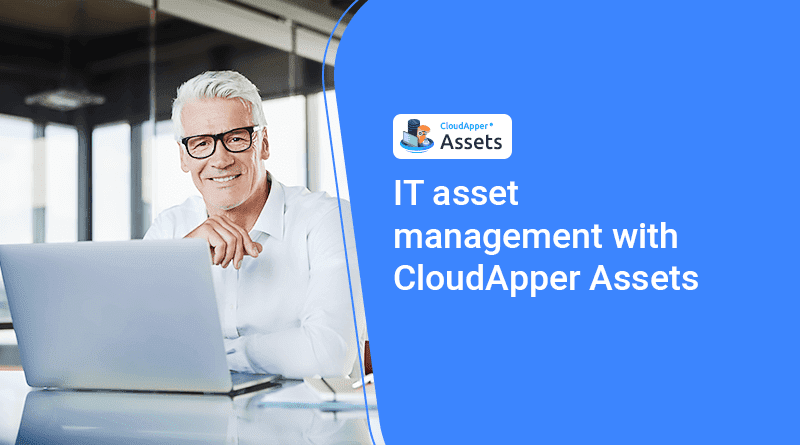Businesses nowadays depend heavily on IT assets. Most employees use a laptop or PC, and additional assets like a keyboard and mouse are also necessary. As the business acquires more and more IT assets, the chance of mistreatment of these assets becomes more viable. That is why companies often adopt an IT asset management approach.
Traditionally, these fixed assets were managed manually. Firms used to use platforms like Excel or spreadsheets to keep track. With time, this technique proved to be incompetent as it lacked a lot of crucial features. After a thorough market study, CloudApper came up with an EAM solution that fills the gap in the previous asset management process.
There are lots of benefits to asset management, and Companies have recently discovered these benefits.
What is IT asset management?
IT asset management, also called ITAM, is a way for an organization to keep track of, deploy, maintain, upgrade, and get rid of its assets in time. To put it simply, it means making sure that an organization keeps a track record of and utilizes all of its valuable assets.
IT assets only work for a certain amount of time. The IT asset lifecycle can be managed proactively so that an organization can get the most value out of them. Asset lifecycle management may be perceived differently by different organizations, but it usually includes planning, buying, using, maintaining, and disposing of assets. The biggest part of IT asset management is applying processes to all stages of its lifecycle to determine the total cost of ownership and get the most out of the assets.
Common complaints about IT assets
IT asset management is associated, like other management programs, with its challenges, which various companies have recently come face to face with. These companies were facing various IT asset management issues, and the root cause of these issues was hard to identify. Some of the issues identified in this book include the following:
Obsolete Assets
Sometimes companies acquire an asset and do not give much consideration to its versions. A company can buy a laptop 10 years ago but still need to update it as time goes on, with time the item will no more be of use to the company perhaps because the version has completely phased out or become obsolete, which affects the work performance of the employees. However, proper records show the company the availability of the assets. Without asset lifecycle management, this issue is most likely to occur, and as a result, the employees will not be able to perform competently in their jobs.
Theft and misplacement
One can easily lose track of some items like a mouse, hard drive, etc. These items are given importance, which is why they are prone to theft and misplacement. Once such items are lost or stolen, it is very hard to hold someone accountable. Such incidents are ignored, and new items are purchased.
Ghost asset
This is a genuine concern for companies. A lot of times, company records show assets that are not currently available. This may happen for many reasons. The asset might be lost, and it was not reported. It can be damaged and went for repairs; however, follow-up processes were not initiated.
Due to this reason, companies may overestimate the total value of assets. This might keep them from buying new equipment or paying more taxes.
Overstocking
Without a proper record, companies will be unaware of their current asset stock. If every time the company buys a new asset for a requisition, the company will end up with a lot of assets that might not be necessary. The required item might be available in the company, but for lack of asset data, the company might be compelled to buy new ones.
Maintainance
Electronic items might malfunction with usage. In most cases, it does not make them unworthy of usage. With a simple repair, the problem can be solved. However, the operation might not have an effective maintenance schedule. Items that went for maintenance can sit in the store for months without asset tracking.
Why is asset management important?
Effective management of IT assets is crucial to any company’s long-term goals. Strategic choices about using and distributing IT resources among employees are facilitated by the centralization of financial, inventory, and contractual processes.
This business practice is essential for ensuring that employees have access to technology. This will help them to perform better at their jobs while maximizing the use of the company’s assets and avoiding unnecessary expenditures.
Here are some of the many reasons for the significance of IT asset management systems:
-
Maintain compliance
It won’t be easy to comply with industry regulations without an IT asset management solution. When you lack complete knowledge of your assets and assign employees, things can get messy. Management will become extremely tough. For instance, information might be stored away, which defies convenience. It can only be found using the proper audit procedure. With an asset management system, assets are stored in a data center, which can be easily retrieved.
-
Accurate valuation
Following the organization’s needs, new assets are added regularly. If records are not maintained and assets are not tracked, they may become obsolete, miss their target, or be stolen. With accurate data, companies can easily identify these assets and get them off the books. This will help them get a proper valuation of their gross assets, saving them from an inaccurate tax declaration.
-
Improve productivity
With the right system, the asset management process is way more effective and efficient. The employees will get the proper technical support needed to perform their tasks. This will be a great help for them, and they will be able to perform better and more efficiently. The whole process will be more productive with a swift management channel.
-
Evaluate assets’ contribution
Assets are bought to obtain their exact value. Companies prefer the best items as they provide them with the best service. Effective asset management software will produce more accurate evaluations. The contribution to the operation can be supported with actual records. The management can take much more informed decisions with such evaluations.
-
Waste management
If a company buys additional assets without properly utilizing its existing assets, it will be a waste of money. The case is not rare; companies have suffered from this. This happens due to bad asset management practices. An easy solution to this would be to get an asset management system. This will help companies track all the asset-related data and assort resources appropriately.
How CloudApper can help
IT asset management software is a digital solution designed to manage an organization’s IT assets. Whether it’s a laptop, computer, capital equipment, or small tools, the CloudApper Assets app supports an effective IT asset management process throughout the whole lifecycle. It helps your organization audit and evaluates them through a central system. To find out more about the app, contact us now.

















